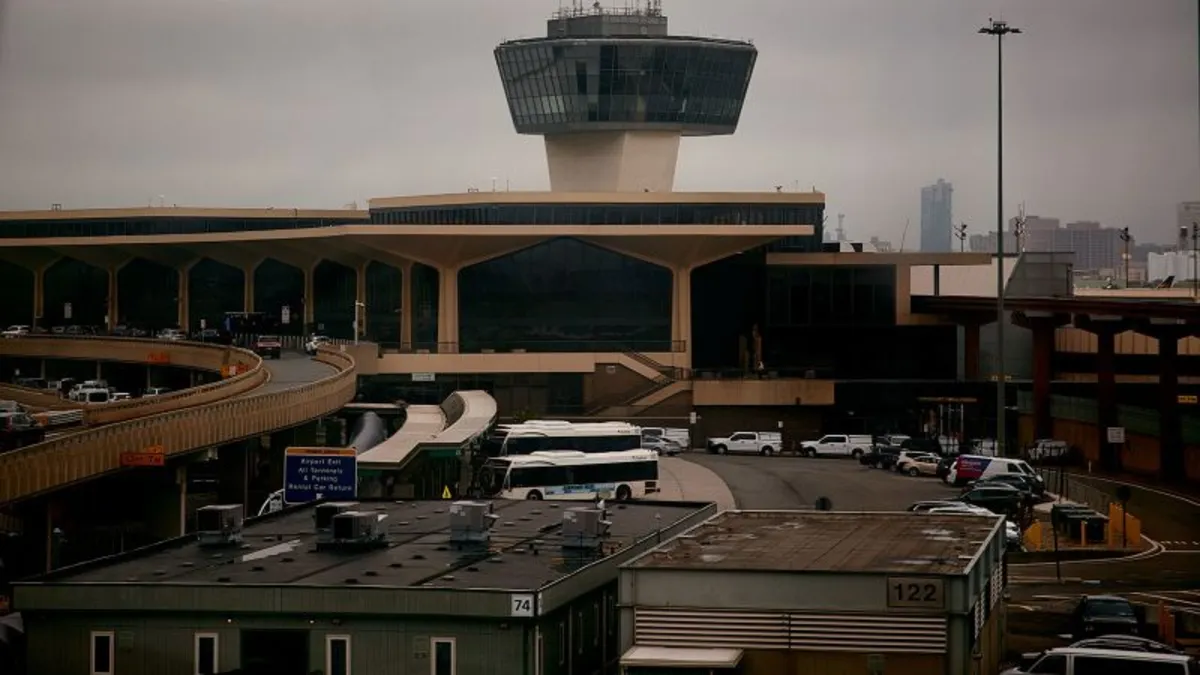
Last week, Newark Liberty International Airport experienced a severe air traffic system meltdown, described by an air traffic controller as “the most dangerous situation you could have.” This incident, which occurred on April 28, has resulted in a cascade of canceled flights and heightened scrutiny of the airport's outdated air traffic control system. As the fallout from the outage extends into a second week, many air traffic controllers are taking trauma leave amidst a national shortage of personnel in this critical role.
As of Tuesday evening, the Federal Aviation Administration (FAA) reported that flights arriving at Newark, one of the busiest airports in the United States, were experiencing average delays of up to four hours. The FAA has indicated that it expects these disruptions to persist as recovery efforts continue. The air traffic controller, who spoke to CNN on the condition of anonymity, described the chaotic environment upon returning from a break. He found his colleagues grappling with a communication outage lasting between 60 to 90 seconds, during which they were unable to monitor planes on radar or communicate with pilots.
The outage affected radar information from an FAA facility in Westbury, New York, which previously managed flights bound for Newark. Control of Newark's airspace was transferred to Philadelphia last July, where the radars are now operated through a remote line, which one source likened to “a long extension cord.” The air traffic controller attributed the failure to a single data feed connecting the old and new facilities, stating, “It basically doesn’t have redundancy.” He emphasized that this system relies on a single stream for both radar and radio communication, which had failed multiple times before.
According to the controller, the data feed had previously gone down at least twice. In one alarming incident, controllers were unable to communicate with a FedEx MD-11 that overshot its final approach path into Newark, entering the busy airspace over LaGuardia. “It was just by the grace of God that there wasn’t another plane in his way,” he remarked, highlighting the potential dangers of such outages.
Analysis from flight tracking site Flightradar24 indicated that approximately 15 to 20 flights were under the control of Newark Liberty approach controllers when the communication and radar systems failed. Transportation Secretary Sean Duffy criticized the age of the air traffic control system, stating, “We use floppy disks. We use copper wires,” and asserted that the current system is ineffective for managing today’s air traffic demands.
On Monday, Duffy further explained that primary communication was lost and the backup system did not activate immediately. A source described the scenario as akin to driving with a blindfold, highlighting the immense stress faced by air traffic controllers during such situations. Colin Scoggins, a former air traffic controller and retired military specialist at the FAA, emphasized the frightening reality of losing both radar and communication, stating, “If you cannot talk to a pilot, then you’re really in trouble.”
The tense atmosphere was palpable, as air traffic control conversations recorded by LiveATC.net revealed the anxiety between controllers and pilots attempting to land. Scoggins noted that controllers are trained to maintain control, and when that control is stripped away, it can lead to traumatic experiences. Following the outage, five FAA employees—including a supervisor, three controllers, and one trainee—took 45 days of trauma leave, underscoring the psychological toll of the incident.
Aviation analyst Miles O’Brien praised the controllers for their efforts in a potentially dangerous situation, stating, “The individuals who run this system daily perform quiet heroic acts, in spite of a system that is built to set them up for failure.” He highlighted the importance of addressing the systemic issues within the air traffic control infrastructure, noting that there’s only so much stress controllers can endure before it becomes overwhelming.
As the investigation into the Newark Liberty International Airport air traffic system meltdown continues, calls for modernization and improvements to the outdated air traffic control systems are becoming increasingly urgent. Ensuring the safety of air travel depends on addressing these critical infrastructure issues.